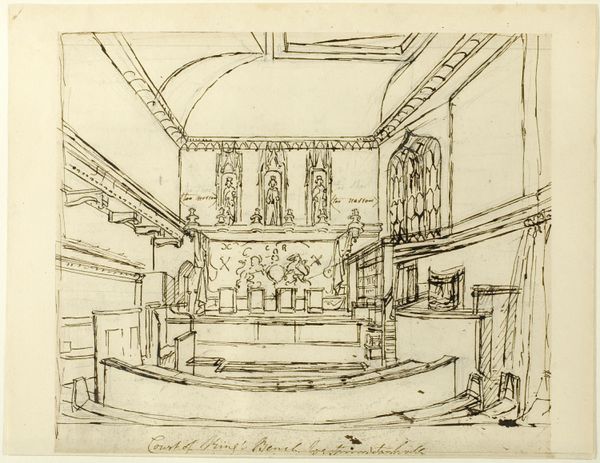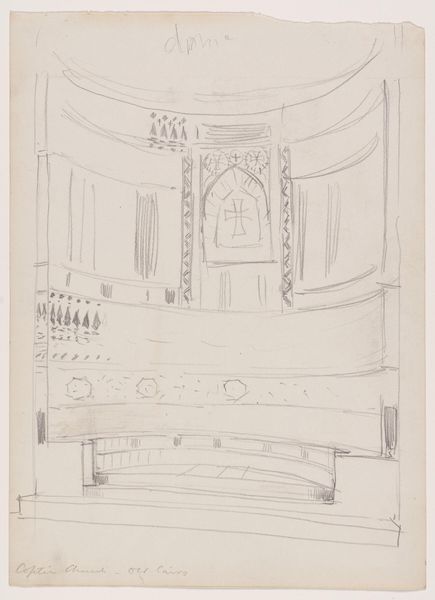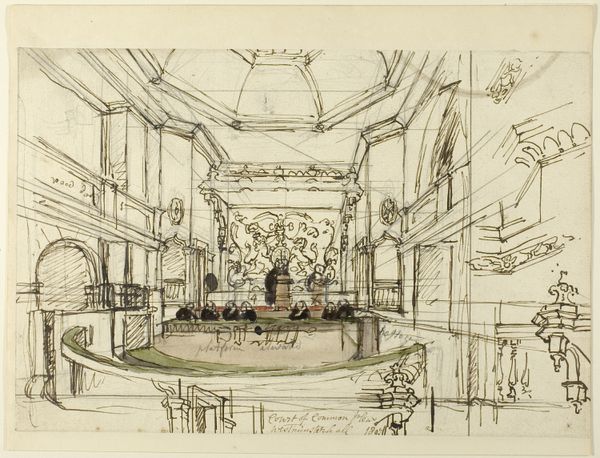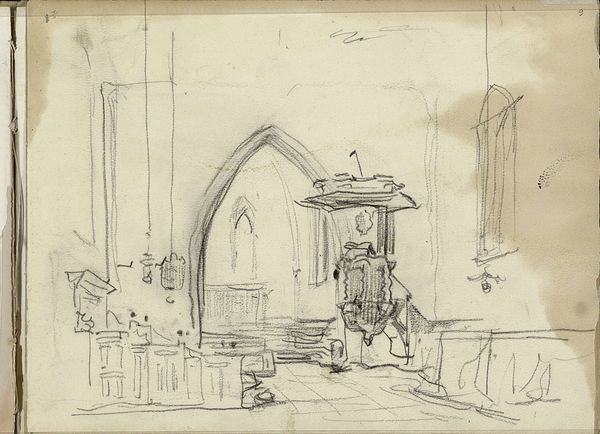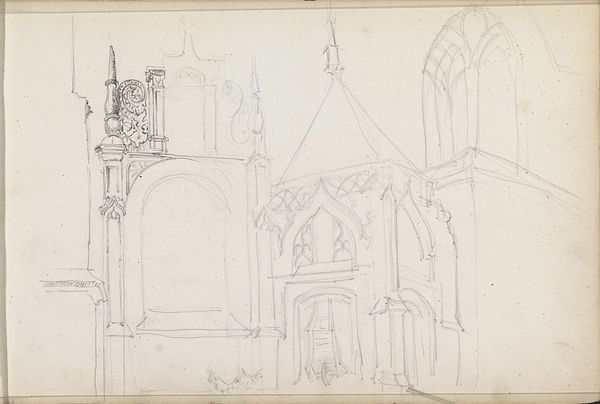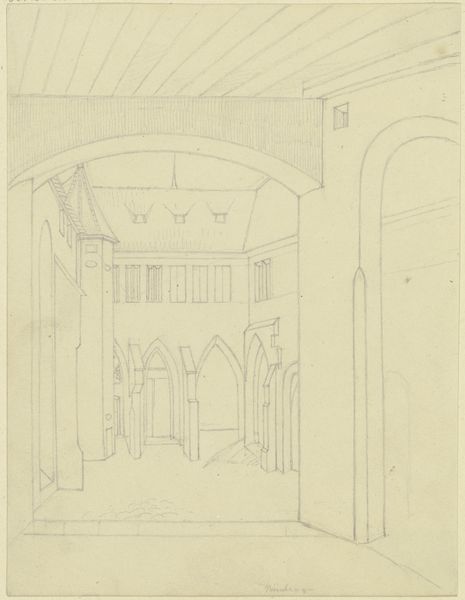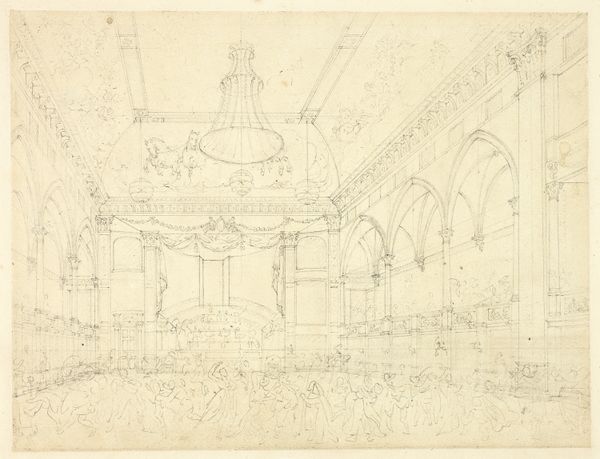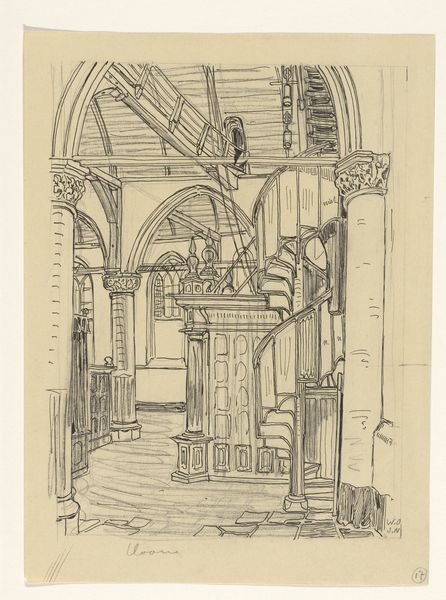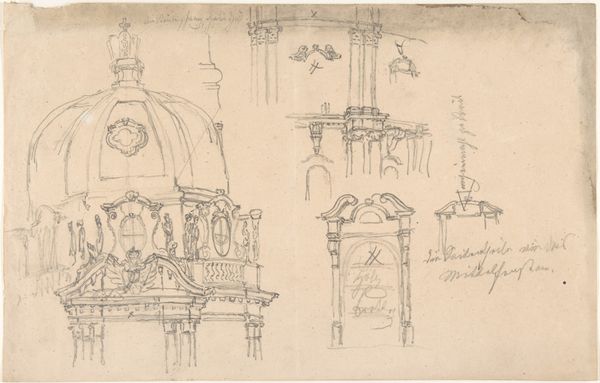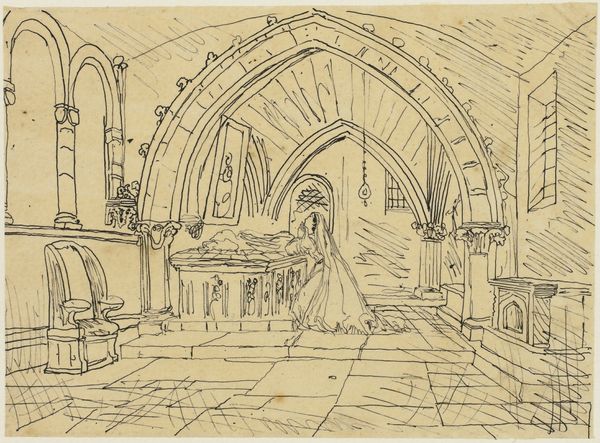
drawing, print, paper, ink, pen, architecture
#
drawing
# print
#
etching
#
paper
#
ink
#
pen
#
architecture
Dimensions: 231 × 292 mm
Copyright: Public Domain
Editor: Here we have Augustus Charles Pugin’s "Court of Chancery, Westminster Hall," created around 1808. It’s a pen, ink, and etching on paper, and immediately I’m struck by the sheer formality of the architecture, the linear precision despite it being a drawing. It almost feels like a stage set. How do you interpret this work? Curator: The weight of architectural imagery in this drawing is substantial. Look closely at the symbolic language embedded in the ornamentation – the stylized figures, the geometric patterns. These aren’t just decorative; they reflect the perceived authority and order of the court system. Consider the power of architectural space, how it’s used to evoke reverence, or perhaps, even intimidation. Does the composition invite scrutiny, or does it deliberately keep us at a distance? Editor: That's a really interesting point. It does feel distant, and there are so many details; it's hard to know where to focus. I hadn’t considered that the artist may have intended to represent authority through architecture itself. Curator: And what of the light, implied rather than fully rendered? How does that contribute to the overall feeling? Is it inviting or oppressive? These spaces were designed to impress upon those within them a sense of power and hierarchy. The symbolic weight of those decisions has carried forward through time, subtly influencing our understanding of legal spaces. Think about how architectural styles influence how people act, feel, and remember events within those spaces. Editor: That’s fascinating. I guess I always just thought about architecture as, well, buildings! But seeing it as a system of symbols that shape behavior really opens it up. Curator: Precisely. Every line, every ornament is loaded with cultural meaning. The memory of this architecture lives on through images like this one, informing how we perceive justice, authority, and power, whether consciously or not. Editor: This really helps me appreciate the cultural memory embedded in what at first seemed just to be a technical drawing of a courtroom. Thanks for sharing your insights.
Comments
No comments
Be the first to comment and join the conversation on the ultimate creative platform.
